Software Development
Web App Development
+ 3 more ...
How To Integrate AI-powered Virtual Assistants For Customer Service

13 Mar 2025
by Nadiy, Senior Content Writer

13 Mar 2025
by Nadiy, Senior Content Writer
Software Development
Web App Development
Virtual Assistant
Artificial Intelligence
AI
How To Integrate AI-powered Virtual Assistants For Customer Service
Table of contents
Contact us
We will get back to you in the next 48 hours.
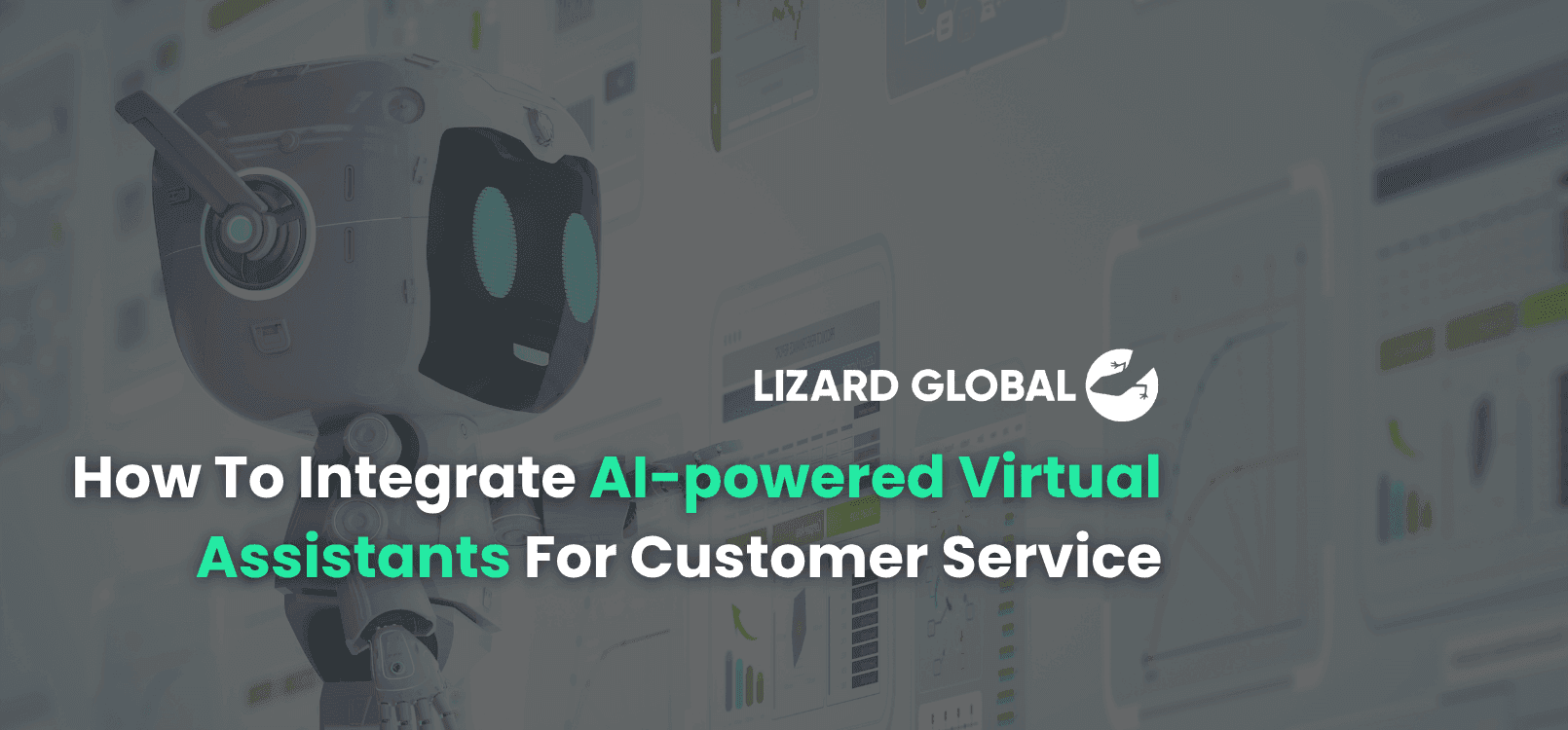
How To Integrate AI-powered Virtual Assistants For Customer Service
Looking to elevate your customer service with cutting-edge technology? Discover how AI-powered virtual assistants can streamline operations, enhance customer satisfaction, and reduce costs. Our latest blog covers everything you need to know about integrating AI into your support strategy, with real-world examples and expert tips to help you get started.
key takeaways
With almost everything imaginable being available online these days, customer expectations are higher than ever. Customers demand instant responses, personalized experiences, and 24/7 support. Businesses that fail to meet these expectations risk losing valuable customers.
This is where AI-powered virtual assistants come into play. By automating customer service tasks, these intelligent tools can provide faster, more efficient support while reducing operational costs.But how exactly do you integrate AI-powered virtual assistants into your customer service strategy?
In this blog, we will guide you through the process and provide actionable insights to ensure a smooth AI implementation that will enhance your customer experience and improve your bottom line.
What Are AI-Powered Virtual Assistants?
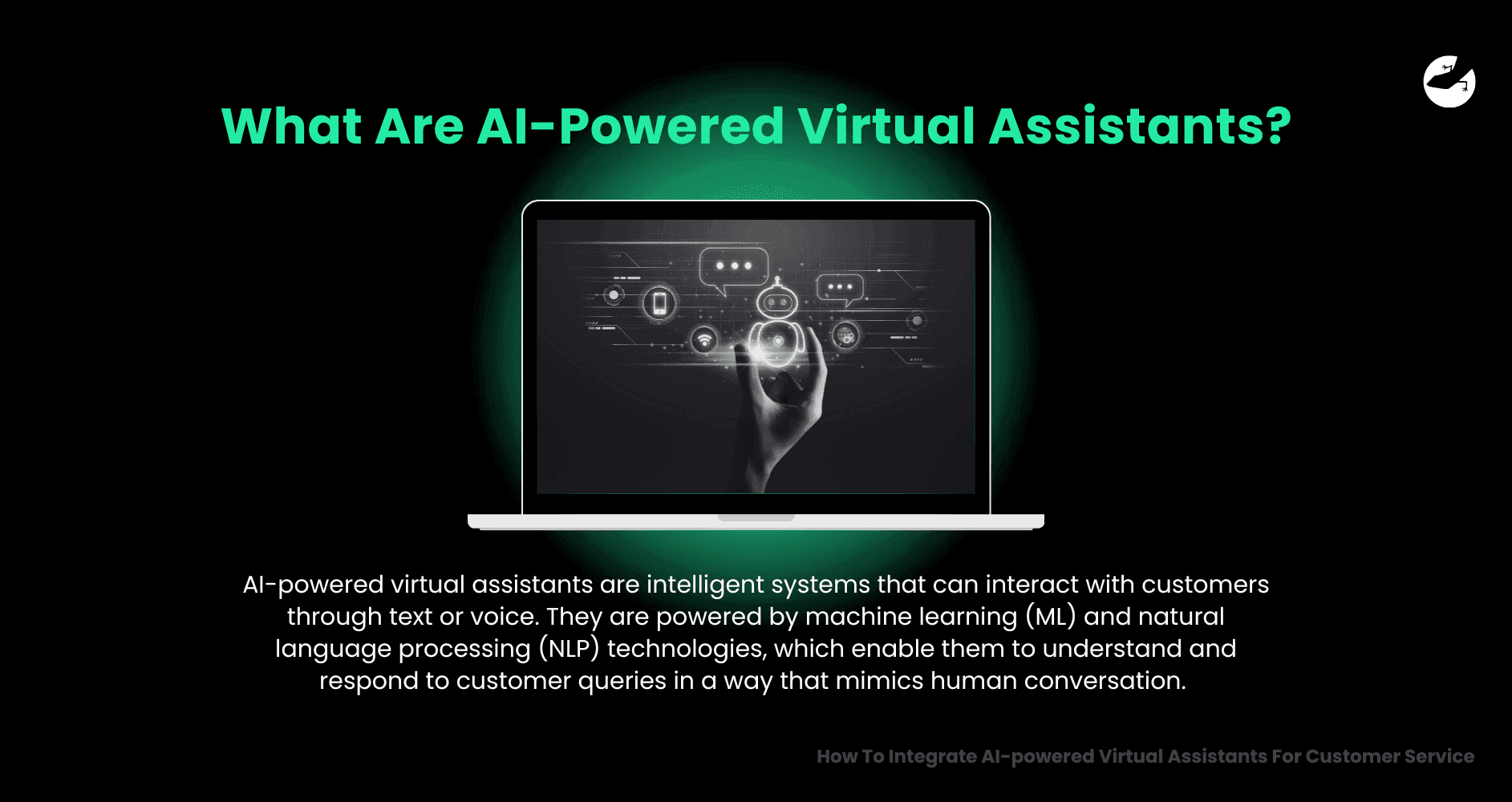
AI-powered virtual assistants are intelligent systems that can interact with customers through text or voice. They are powered by machine learning (ML) and natural language processing (NLP) technologies, which enable them to understand and respond to customer queries in a way that mimics human conversation. Unlike traditional customer service solutions, AI assistants can handle routine tasks, provide quick answers, and even assist with complex queries, making them a valuable asset for businesses of all sizes.
While AI virtual assistants and chatbots may seem similar, they have key differences. Traditional chatbots operate based on predefined rules and scripted responses, meaning they can only answer specific queries they’ve been programmed for. In contrast, AI-powered virtual assistants can learn from past interactions, understand context, and engage in more dynamic, human-like conversations. This allows them to handle complex issues, offer personalized recommendations, and improve over time, making them far more effective in customer service environments.
Why Integrate AI Virtual Assistants Into Customer Service?
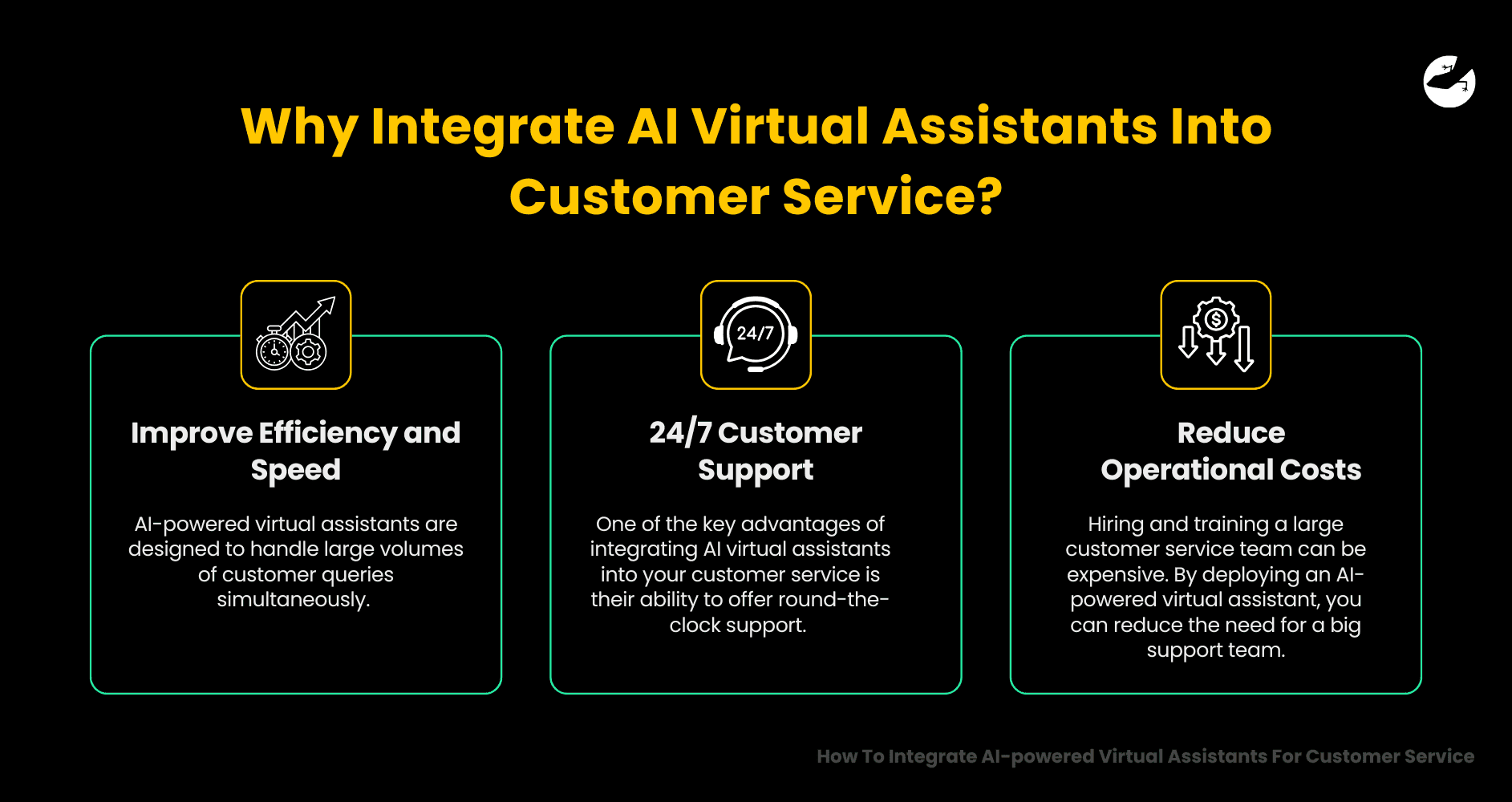
1. Improve Efficiency and Speed
AI-powered virtual assistants are designed to handle large volumes of customer queries simultaneously. This eliminates the need for customers to wait in long queues and enables businesses to respond faster.
Whether it’s answering frequently asked questions, scheduling appointments, or processing simple requests, virtual assistants can do it all.
2. 24/7 Customer Support
One of the key advantages of integrating AI virtual assistants into your customer service is their ability to offer round-the-clock support. This ensures that customers in different time zones or those who need immediate help during off-hours can still get assistance.
AI-powered assistants can reduce customer frustration and enhance satisfaction by providing instant responses at any time of the day or night.
3. Reduce Operational Costs
Hiring and training a large customer service team can be expensive. By deploying an AI-powered virtual assistant, you can reduce the need for a big support team while maintaining a high level of customer service.
AI can automate repetitive tasks, freeing up human agents to focus on more complex issues.
Key Steps to Integrate AI Virtual Assistants for Customer Service
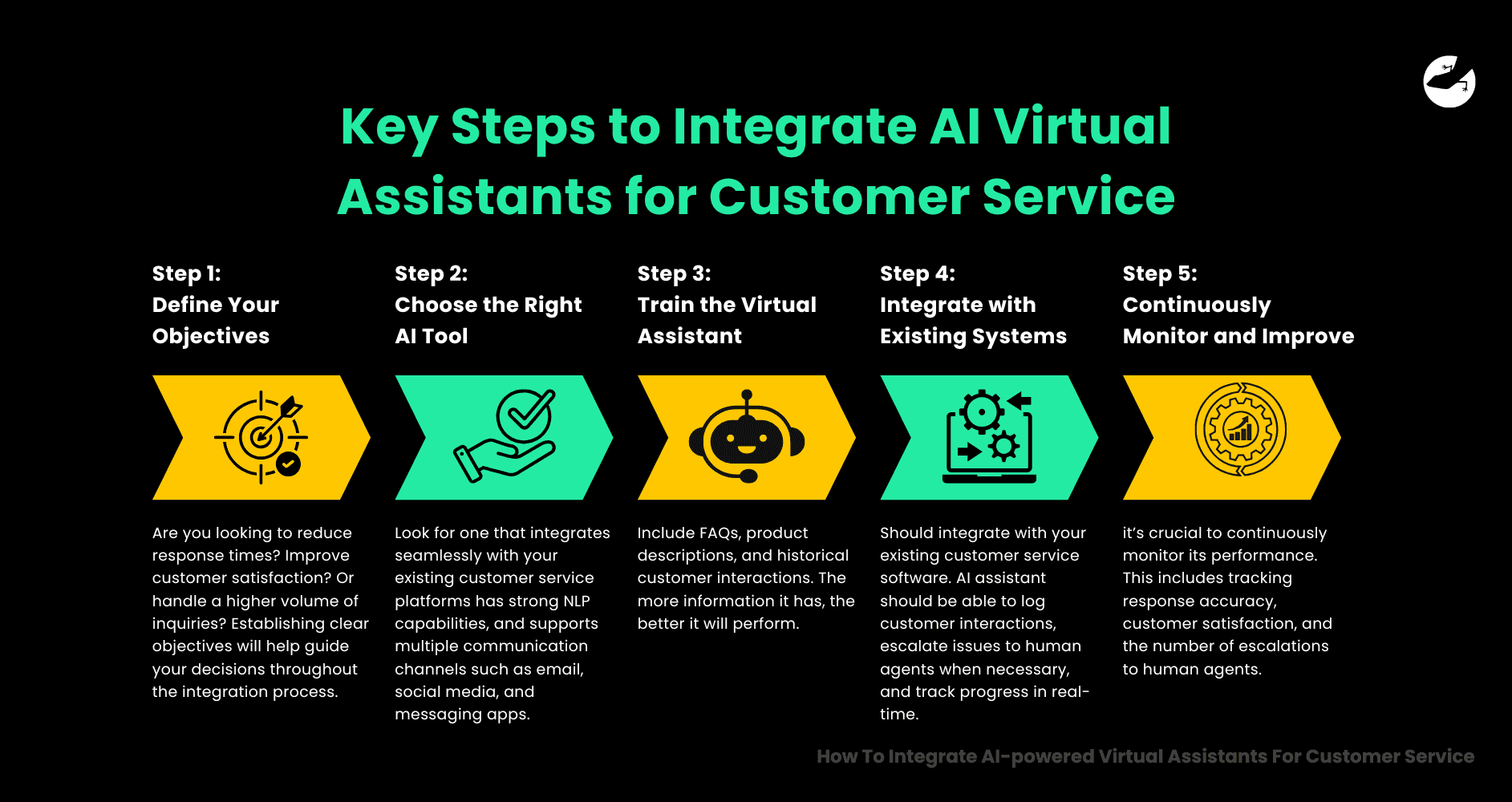
Step 1: Define Your Objectives
Before integrating an AI
virtual assistant into your customer service strategy, you must first define what you hope to achieve. Are you looking to reduce response times? Improve customer satisfaction? Or handle a higher volume of inquiries? Establishing clear objectives will help guide your decisions throughout the integration process.
Step 2: Choose the Right AI Tool
There are numerous AI-powered virtual assistants available in the market, but not all of them will suit your business needs. When selecting an AI assistant, look for one that integrates seamlessly with your existing customer service platforms (e.g., CRM systems, live chat, etc.), has strong NLP capabilities, and supports multiple communication channels such as email, social media, and messaging apps.
Example: Sephora, a global cosmetics retailer, has integrated the Sephora Virtual Artist, an AI-powered assistant, into their website and mobile app. The assistant allows customers to virtually try on makeup products and get personalized recommendations. This personalized experience has significantly boosted customer engagement and sales.
Step 3: Train the Virtual Assistant
For an AI assistant to provide accurate responses, it needs to be trained on a vast amount of data. This includes FAQs, product descriptions, and historical customer interactions. The more information it has, the better it will perform.
Example: Mitsubishi Electric utilizes a smart AI assistant in their customer support department to resolve issues related to HVAC systems. The assistant was trained using a combination of customer queries, product manuals, and troubleshooting guides, enabling it to provide effective solutions for common problems.
Step 4: Integrate with Existing Systems
To ensure a seamless experience, your AI-powered virtual assistant should integrate with your existing customer service software. Whether you use a CRM tool or a ticketing system, the AI assistant should be able to log customer interactions, escalate issues to human agents when necessary, and track progress in real-time.
Example: H&M, a global fashion retailer, uses an AI-powered chatbot named Ada to handle customer service inquiries. Ada integrates with H&M's CRM system, ensuring that all interactions are logged and monitored for quality assurance.
Step 5: Continuously Monitor and Improve
Once the AI virtual assistant is up and running, it’s crucial to continuously monitor its performance. This includes tracking response accuracy, customer satisfaction, and the number of escalations to human agents. By using these insights, you can fine-tune the virtual assistant’s algorithms and improve its capabilities over time.
Example: KLM Royal Dutch Airlines employs a virtual assistant named “BlueBot” to assist passengers with booking tickets, flight information, and baggage inquiries. KLM regularly reviews BlueBot’s interactions with customers, refining the assistant to handle new scenarios and improve accuracy.
Challenges to Consider When Integrating AI-Powered Virtual Assistants
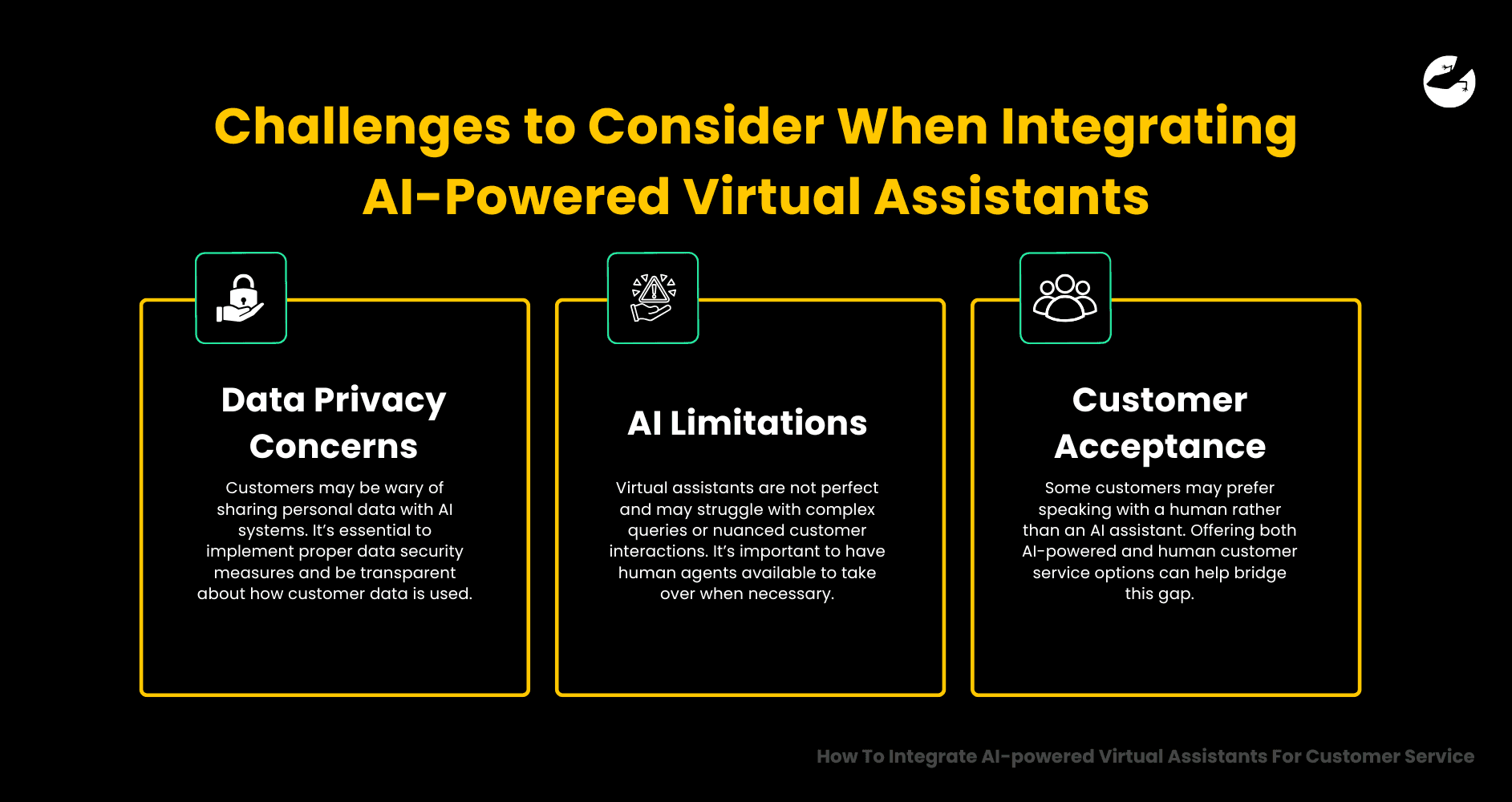
While AI-powered virtual assistants offer many benefits, there are also challenges to consider:
- Data Privacy Concerns: Customers may be wary of sharing personal data with AI systems. It’s essential to implement proper data security measures and be transparent about how customer data is used.
- AI Limitations: Virtual assistants are not perfect and may struggle with complex queries or nuanced customer interactions. It’s important to have human agents available to take over when necessary.
- Customer Acceptance: Some customers may prefer speaking with a human rather than an AI assistant. Offering both AI-powered and human customer service options can help bridge this gap.
How Lizard Global Can Help You Integrate AI-Powered Virtual Assistants
Integrating AI-powered virtual assistants into your customer service strategy can drastically improve efficiency, customer satisfaction, and cost-effectiveness. However, a successful integration requires careful planning, selecting the right AI tools, and continuous optimization.

At Lizard Global, we specialize in helping businesses seamlessly implement AI-powered solutions, including virtual assistants. Our expert team can guide you through every step of the process, from selecting the best tools for your needs to training the assistant and integrating it with your existing systems. With our support, you can enhance your customer service experience and stay ahead in the ever-evolving digital landscape.
Let us help you elevate your customer service with AI technology. Reach out to Lizard Global today to learn more about our AI integration services and take the first step toward transforming your customer experience.
Join 2000+ subscribers
Stay in the loop with everything you need to know

How To Integrate AI-powered Virtual Assistants For Customer Service
Looking to elevate your customer service with cutting-edge technology? Discover how AI-powered virtual assistants can streamline operations, enhance customer satisfaction, and reduce costs. Our latest blog covers everything you need to know about integrating AI into your support strategy, with real-world examples and expert tips to help you get started.
With almost everything imaginable being available online these days, customer expectations are higher than ever. Customers demand instant responses, personalized experiences, and 24/7 support. Businesses that fail to meet these expectations risk losing valuable customers.
This is where AI-powered virtual assistants come into play. By automating customer service tasks, these intelligent tools can provide faster, more efficient support while reducing operational costs.But how exactly do you integrate AI-powered virtual assistants into your customer service strategy?
In this blog, we will guide you through the process and provide actionable insights to ensure a smooth AI implementation that will enhance your customer experience and improve your bottom line.
What Are AI-Powered Virtual Assistants?

AI-powered virtual assistants are intelligent systems that can interact with customers through text or voice. They are powered by machine learning (ML) and natural language processing (NLP) technologies, which enable them to understand and respond to customer queries in a way that mimics human conversation. Unlike traditional customer service solutions, AI assistants can handle routine tasks, provide quick answers, and even assist with complex queries, making them a valuable asset for businesses of all sizes.
While AI virtual assistants and chatbots may seem similar, they have key differences. Traditional chatbots operate based on predefined rules and scripted responses, meaning they can only answer specific queries they’ve been programmed for. In contrast, AI-powered virtual assistants can learn from past interactions, understand context, and engage in more dynamic, human-like conversations. This allows them to handle complex issues, offer personalized recommendations, and improve over time, making them far more effective in customer service environments.
Why Integrate AI Virtual Assistants Into Customer Service?

1. Improve Efficiency and Speed
AI-powered virtual assistants are designed to handle large volumes of customer queries simultaneously. This eliminates the need for customers to wait in long queues and enables businesses to respond faster.
Whether it’s answering frequently asked questions, scheduling appointments, or processing simple requests, virtual assistants can do it all.
2. 24/7 Customer Support
One of the key advantages of integrating AI virtual assistants into your customer service is their ability to offer round-the-clock support. This ensures that customers in different time zones or those who need immediate help during off-hours can still get assistance.
AI-powered assistants can reduce customer frustration and enhance satisfaction by providing instant responses at any time of the day or night.
3. Reduce Operational Costs
Hiring and training a large customer service team can be expensive. By deploying an AI-powered virtual assistant, you can reduce the need for a big support team while maintaining a high level of customer service.
AI can automate repetitive tasks, freeing up human agents to focus on more complex issues.
Key Steps to Integrate AI Virtual Assistants for Customer Service

Step 1: Define Your Objectives
Before integrating an AI
virtual assistant into your customer service strategy, you must first define what you hope to achieve. Are you looking to reduce response times? Improve customer satisfaction? Or handle a higher volume of inquiries? Establishing clear objectives will help guide your decisions throughout the integration process.
Step 2: Choose the Right AI Tool
There are numerous AI-powered virtual assistants available in the market, but not all of them will suit your business needs. When selecting an AI assistant, look for one that integrates seamlessly with your existing customer service platforms (e.g., CRM systems, live chat, etc.), has strong NLP capabilities, and supports multiple communication channels such as email, social media, and messaging apps.
Example: Sephora, a global cosmetics retailer, has integrated the Sephora Virtual Artist, an AI-powered assistant, into their website and mobile app. The assistant allows customers to virtually try on makeup products and get personalized recommendations. This personalized experience has significantly boosted customer engagement and sales.
Step 3: Train the Virtual Assistant
For an AI assistant to provide accurate responses, it needs to be trained on a vast amount of data. This includes FAQs, product descriptions, and historical customer interactions. The more information it has, the better it will perform.
Example: Mitsubishi Electric utilizes a smart AI assistant in their customer support department to resolve issues related to HVAC systems. The assistant was trained using a combination of customer queries, product manuals, and troubleshooting guides, enabling it to provide effective solutions for common problems.
Step 4: Integrate with Existing Systems
To ensure a seamless experience, your AI-powered virtual assistant should integrate with your existing customer service software. Whether you use a CRM tool or a ticketing system, the AI assistant should be able to log customer interactions, escalate issues to human agents when necessary, and track progress in real-time.
Example: H&M, a global fashion retailer, uses an AI-powered chatbot named Ada to handle customer service inquiries. Ada integrates with H&M's CRM system, ensuring that all interactions are logged and monitored for quality assurance.
Step 5: Continuously Monitor and Improve
Once the AI virtual assistant is up and running, it’s crucial to continuously monitor its performance. This includes tracking response accuracy, customer satisfaction, and the number of escalations to human agents. By using these insights, you can fine-tune the virtual assistant’s algorithms and improve its capabilities over time.
Example: KLM Royal Dutch Airlines employs a virtual assistant named “BlueBot” to assist passengers with booking tickets, flight information, and baggage inquiries. KLM regularly reviews BlueBot’s interactions with customers, refining the assistant to handle new scenarios and improve accuracy.
Challenges to Consider When Integrating AI-Powered Virtual Assistants

While AI-powered virtual assistants offer many benefits, there are also challenges to consider:
- Data Privacy Concerns: Customers may be wary of sharing personal data with AI systems. It’s essential to implement proper data security measures and be transparent about how customer data is used.
- AI Limitations: Virtual assistants are not perfect and may struggle with complex queries or nuanced customer interactions. It’s important to have human agents available to take over when necessary.
- Customer Acceptance: Some customers may prefer speaking with a human rather than an AI assistant. Offering both AI-powered and human customer service options can help bridge this gap.
How Lizard Global Can Help You Integrate AI-Powered Virtual Assistants
Integrating AI-powered virtual assistants into your customer service strategy can drastically improve efficiency, customer satisfaction, and cost-effectiveness. However, a successful integration requires careful planning, selecting the right AI tools, and continuous optimization.

At Lizard Global, we specialize in helping businesses seamlessly implement AI-powered solutions, including virtual assistants. Our expert team can guide you through every step of the process, from selecting the best tools for your needs to training the assistant and integrating it with your existing systems. With our support, you can enhance your customer service experience and stay ahead in the ever-evolving digital landscape.
Let us help you elevate your customer service with AI technology. Reach out to Lizard Global today to learn more about our AI integration services and take the first step toward transforming your customer experience.
Join 2000+ subscribers
Stay in the loop with everything you need to know
FAQs

What are AI-powered virtual assistants?
How do AI virtual assistants improve customer service?
What are the benefits of using AI in customer service?
Can AI assistants replace human agents?
How do I choose the right AI virtual assistant for my business?







